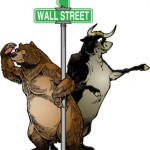 AdvisorShares, the Maryland-based ETF issuer famous for its impressive line-up of actively managed funds, recently launched the QAM Equity Hedge ETF (QEH) to widen its product portfolio.
AdvisorShares, the Maryland-based ETF issuer famous for its impressive line-up of actively managed funds, recently launched the QAM Equity Hedge ETF (QEH) to widen its product portfolio.
QEM, the 16th fund from AdvisorShares’ stable, will be sub-advised by Commerce Asset Management (CAM), a Memphis, Tennessee-based investment advisor and subsidiary of Commerce Holdings LLC that oversees approximately $700 million in assets.
QEH seeks to provide superior risk-adjusted returns by employing an actively-managed long/short investment strategy and seeks to surpass the risk-adjusted returns of approximately 50 percent of the constituents of the HFRI Equity Hedge (Total) Index.
CAM uses its proprietary research by employing Markov Processes International’s (MPI) proprietary and patented algorithms and style analysis techniques along with the patented Dynamic Style Analysis (DSA) hedge-fund software while maintaining its exposure in the benchmark HFRI Equity Hedge (Total) Index.
The benchmark is a fund weighted index of approximately 1000 hedge-fund managers that focuses on Equity Hedge strategy. However, since the fund is an actively managed ‘fund of funds’, it doesn’t seek to replicate the performance of any index. Rather, the investment objective is achieved by investing in long and short positions in ETFs and ETNs that CAM (sub-advisor) believes, in the aggregate, will track the performance of a selected fund universe of long/short equity hedge funds. CAM identifies approximately 50 market factors and tracks the aggregate exposure and approximate returns of the selected universe of long/short equity hedge funds.
CAM uses proprietary analytics to define and track different market factors and relative exposures while making adjustments to the fund’s portfolio as necessary. The market factors that are tracked include country exposure, sector exposure and currency exposure. The fund seeks to stay invested all the times in securities and derivatives that facilitate the desired exposure to market factors.
Under normal conditions, the fund may hold up to 60 percent of assets in money market instruments, cash and cash equivalents and ETPs that invest in highly liquid instruments.
A typical portfolio may include up to 50 ETFs and other securities and the largest holding of any single issuer will range between 5 percent and 10 percent. However, under adverse market conditions, the fund may invest 100 percent of its assets in high quality debt instruments and money market securities either directly or through ETFs and ETNs. At an expense ratio of 1.64 percent, the cost is far less than what traditional hedge funds charge you.
Of course, in the end it’s not just performance that matters but will QEH also be able to avoid major market downturns? Over the years, I have looked at a variety of Long/Short funds/ETFs but have yet to find one that has a major edge when it comes to identifying market turns. Will QEH be the one? Only time will tell.
Disclosure: No holdings
Contact Ulli